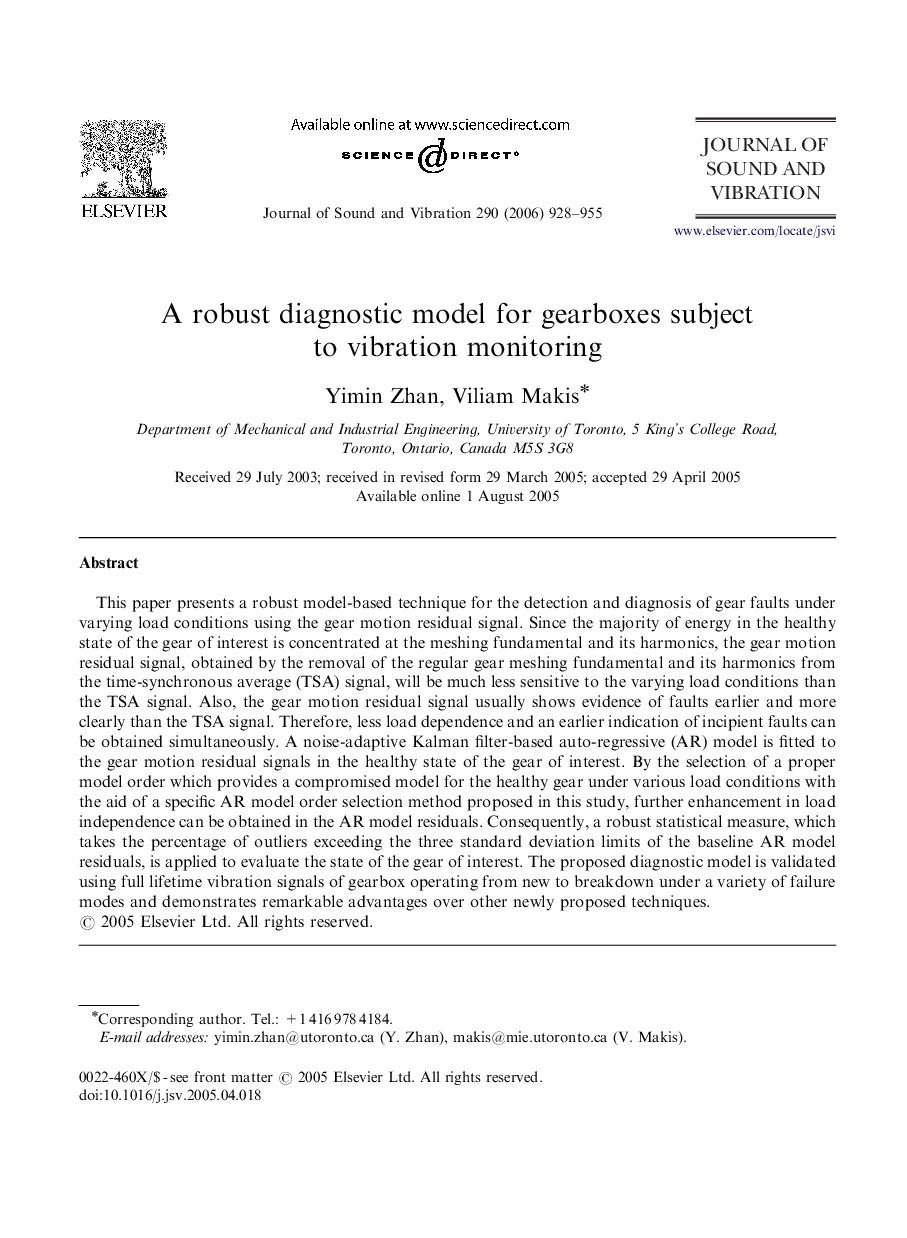| Article ID | Journal | Published Year | Pages | File Type |
|---|---|---|---|---|
| 291863 | Journal of Sound and Vibration | 2006 | 28 Pages |
This paper presents a robust model-based technique for the detection and diagnosis of gear faults under varying load conditions using the gear motion residual signal. Since the majority of energy in the healthy state of the gear of interest is concentrated at the meshing fundamental and its harmonics, the gear motion residual signal, obtained by the removal of the regular gear meshing fundamental and its harmonics from the time-synchronous average (TSA) signal, will be much less sensitive to the varying load conditions than the TSA signal. Also, the gear motion residual signal usually shows evidence of faults earlier and more clearly than the TSA signal. Therefore, less load dependence and an earlier indication of incipient faults can be obtained simultaneously. A noise-adaptive Kalman filter-based auto-regressive (AR) model is fitted to the gear motion residual signals in the healthy state of the gear of interest. By the selection of a proper model order which provides a compromised model for the healthy gear under various load conditions with the aid of a specific AR model order selection method proposed in this study, further enhancement in load independence can be obtained in the AR model residuals. Consequently, a robust statistical measure, which takes the percentage of outliers exceeding the three standard deviation limits of the baseline AR model residuals, is applied to evaluate the state of the gear of interest. The proposed diagnostic model is validated using full lifetime vibration signals of gearbox operating from new to breakdown under a variety of failure modes and demonstrates remarkable advantages over other newly proposed techniques.
